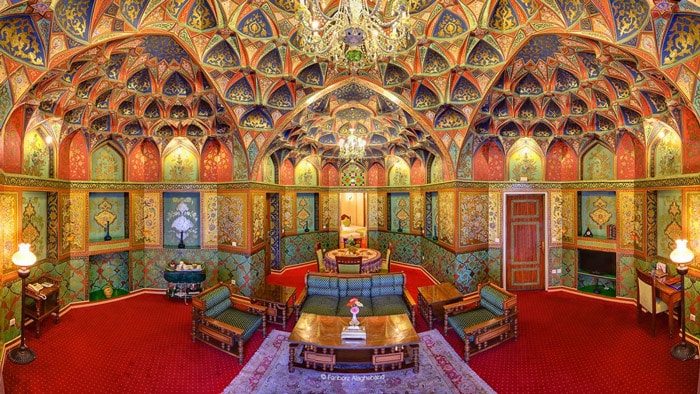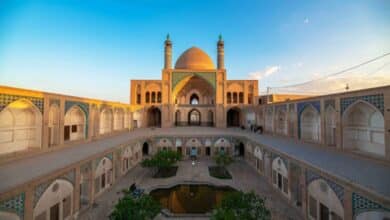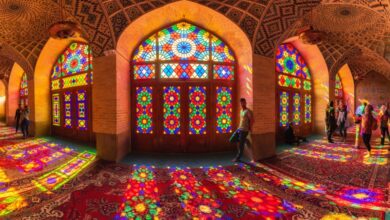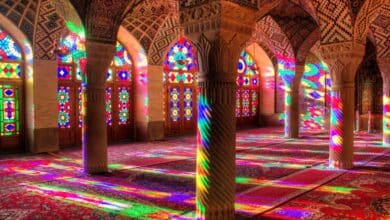Isfahan Shah Mosque: A Masterpiece of Persian Architecture
Explore Isfahan's Cultural Heritage
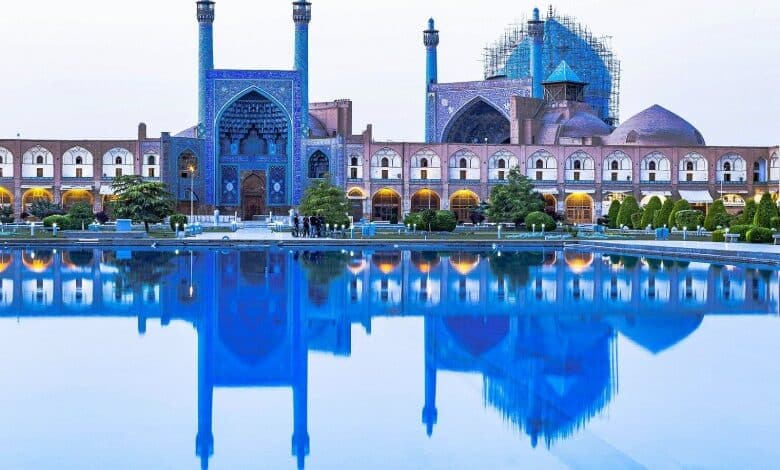
The Shah Mosque, also known as the Abbasid Grand Mosque, can be found in Isfahan, situated to the south of Naqsh-e Jahan Square. Its construction was initiated in the Safavid era under the command of Shah Abbas I, with its embellishments and extensions being finalized during the reign of his successors. Regarded as a pinnacle of Iranian architectural achievement during the Islamic period, the Shah Mosque stands as a testament to the exquisite craftsmanship in architecture, tiling, and carpentry of the 11th century.
Contents
The History of Shah Mosque
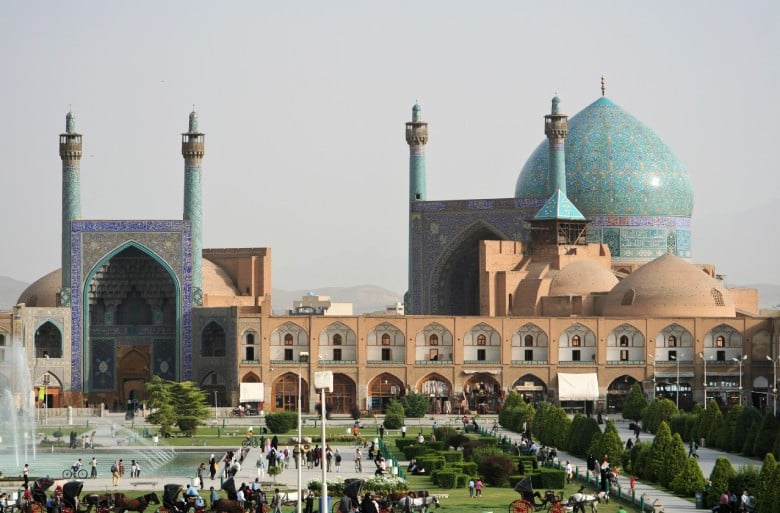
The Grand Mosque of Abbasid, previously known as Sultan Mosque and later renamed Shah Mosque during the Pahlavi era, underwent another name change to Imam Mosque after the 1357 revolution.
This mosque holds significant historical importance in Isfahan and is one of the mosques located in Naqsh-e Jahan Square. It was constructed during the Safavid era and is recognized as a key example of Islamic architecture in Iran.
Regarded as a masterpiece of 11th-century architecture, tiling, and carpentry, the construction of this mosque was initiated in 1020 AH by the decree of Shah Abbas I during the twenty-fourth year of his reign. It was completed under the supervision of his successors.
Ali Akbar Esfahani served as the architect of the Shah Mosque, while Mohib Ali Beyallah was the building supervisor. Calligraphers such as Alireza Abbasi and Abdul Baghi Tabrizi were responsible for the intricate tile work.
Shah Mosque Architecture
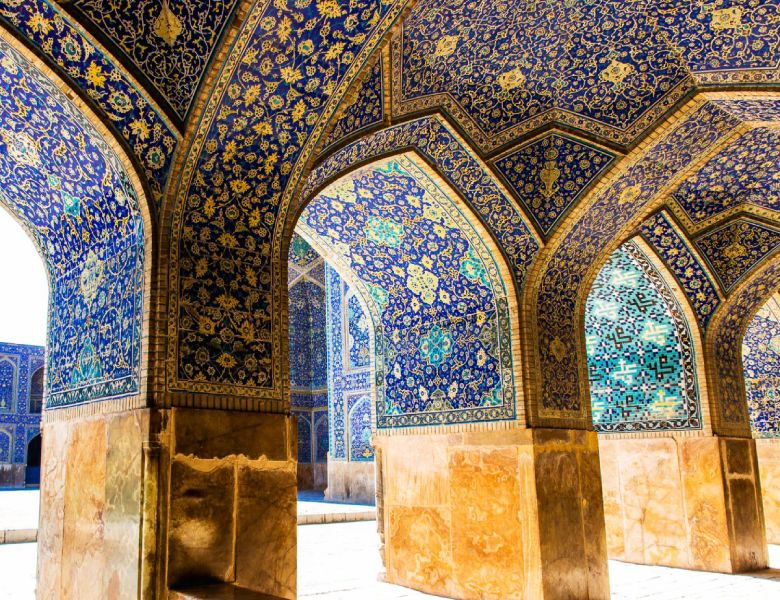
The Shah Mosque, established by the Safavids, served as a platform for showcasing their diverse architectural skills. The layout of four Iwans, a design perfected by the Seljuqi dynasty and adopted by the Safavids, emphasized the importance of the courtyard facade with grand gateways on each side, overshadowing the actual structure itself.
In Persian mosques, the minaret is a defining element, and the Masjed-e Shah boasts four of them. However, tall minarets were not traditionally used for the call to prayer in Persian architecture. Instead, a bouquet (گلدسته) was added for this purpose, positioned on top of the west Iwan in the Masjed-e Shah.
The Mihrab, a massive marble tablet measuring ten feet in height and three feet in width on the southwest wall, served as an indicator of the direction of Mecca.
The Persian domes were distinguished by their vibrant tiles, which adorned both the interior and exterior of the structures.
Upon completion in 1629, the dome of the Masjed-e Shah stood at a towering height of 53 meters, making it the tallest in the city. It was constructed as a double-shelled dome, with a span of 14 meters between the two layers, and was supported by an octagonal dome chamber.
Shah Mosque Decoration
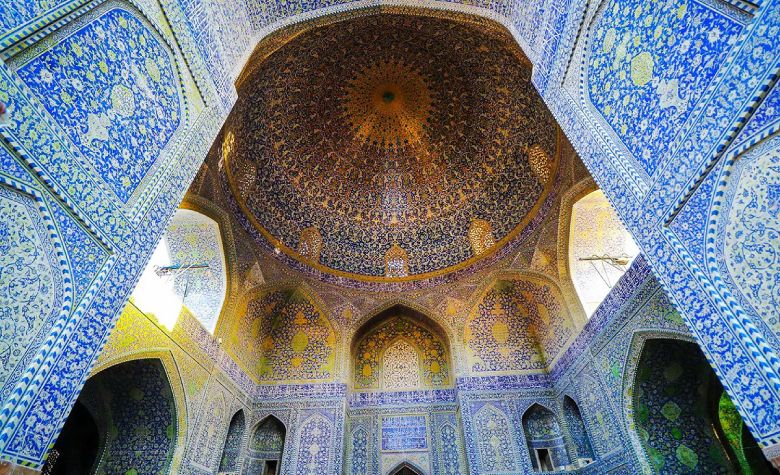
The mosque’s entrance portal showcases the most exquisite tile ornamentation within the structure. The tile mosaic is crafted using a complete spectrum of seven colors (dark Persian blue, light Turkish blue, white, black, yellow, green, and Bisquit). A broad band of inscriptions featuring religious texts in white Thuluth script against a dark blue background encircles the Iwan. The tiles in Masjed-e Shah are mainly blue, with the exception of the covered halls, which were later adorned with tiles in cooler, yellowy-green hues.
Iwans
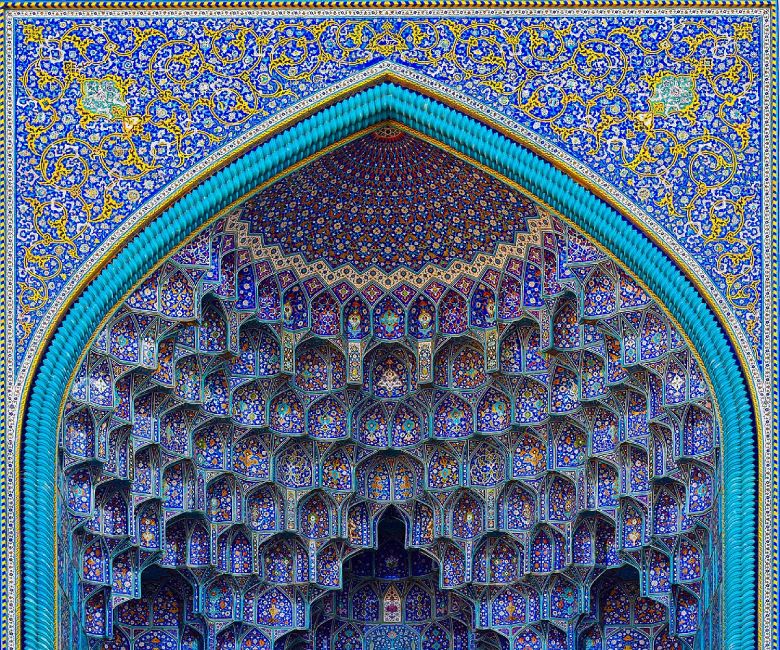
The Imam Mosque of Isfahan features 4 porches, each measuring 100 x 130 meters, and a spacious courtyard measuring 70 x 70 meters. The south porch is adorned with two tall and narrow minarets standing at a height of 48 meters. Additionally, the mosque’s nave is flanked by two rectangular winter naves, each divided into 8 spaces by arched vaults on stone pillars.
The domed rooms are accessed through the eastern and western porches, a departure from the typical layout of Iranian mosques, likely influenced by the design of the Timurid Grand Mosque in Samarkand. The main entrance, connected to the north porch, opens onto the square via a vestibule. Adjacent to the northeast side is a vaulted corridor that leads to a small courtyard, specifically designated for the reservoir.
Sangabs

Sangabs have been crafted as sizable and weighty vessels since ancient times, commonly positioned in the courtyards of mosques, hallways, or passageways, where copious amounts of water were typically poured into them. In times of old, the water stored in these basins was frequently utilized for ritual ablutions and cleansing of hands and face.
The Imam Mosque in Isfahan features seven Sangabs, including :
- The door jamb made of jade stone
- The Western Chehelston Sangab made of jade stone with protection
- The East Sangab Chelestun made of lime
- The Western dome Sangab made of marble
- The Eastern dome Sangab made of marble
- And two other Sangabs in the eastern part of the main entrance .
The naves and dome of the Imam Mosque are truly remarkable. The stunning dome of the mosque is visible from every corner of Naqsh-e Jahan Square in Isfahan, showcasing intricate carvings and art. Particularly at night, when the area is illuminated, the dome appears even more magnificent.
Final Words
The Abbasid Grand Mosque, also known as the Shah Mosque, can be found in Isfahan, Iran. Situated in the south of Naqsh-e Jahan Square, this mosque was constructed during the Safavid era under the command of Shah Abbas I. The intricate decorations and additional features were completed during the reign of his successors.
Regarded as a masterpiece of Iranian architecture in the Islamic era, the Shah Mosque was officially recognized as one of Iran’s national monuments on January 15, 1310, with registration number 107. Together with Naqsh-e Jahan Square, it was designated as a UNESCO World Heritage Site.
Shah Mosque FAQ
Where is Shah Mosque?
The Imam Mosque, situated on the southern side of Naqsh Jahan square in Isfahan.
What period does Imam Mosque date back to?
The Imam Mosque is one of the surviving buildings from the Safavid period, and its construction was started by the order of Shah Abbas I in 1020 AH.
What are the other names of Imam Mosque?
The Imam Mosque is alternatively referred to as Abbasi Mosque, Sultan Mosque, and Shah Mosque.
